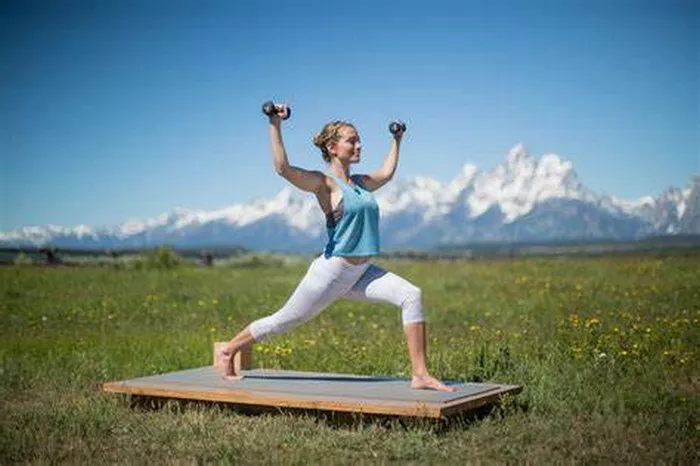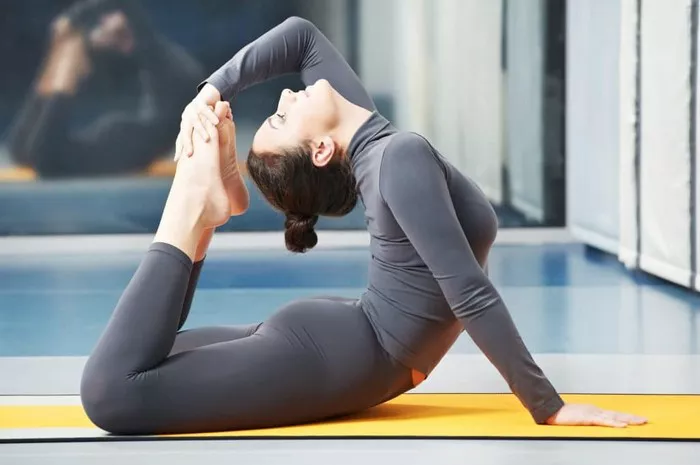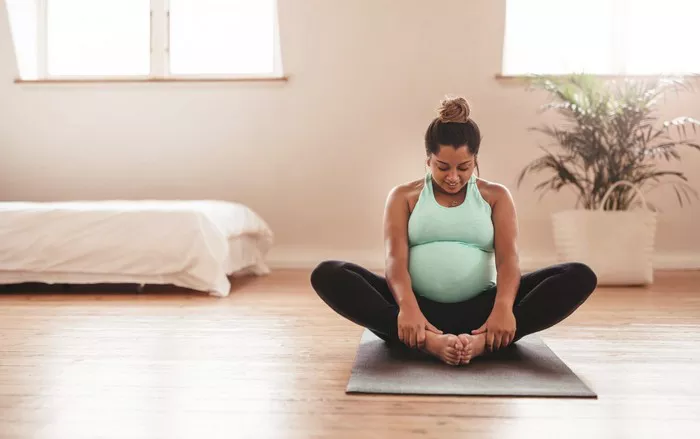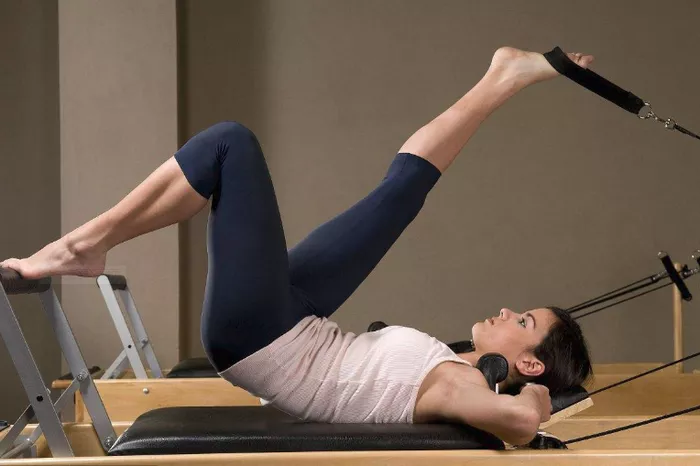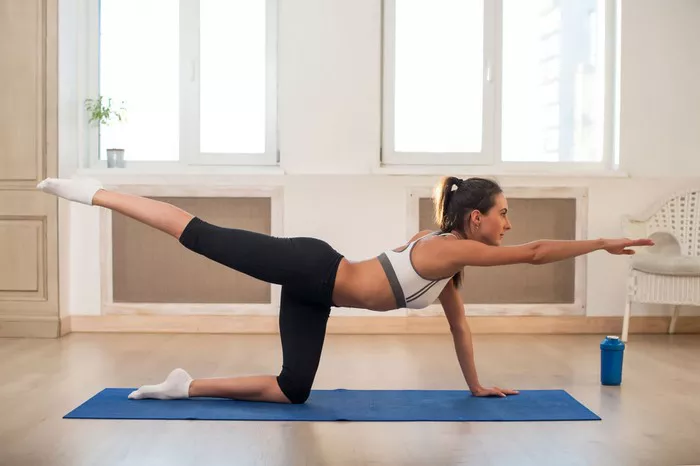Origins and Symbolism
Easy Pose, known as Sukhasana in Sanskrit, is one of the most fundamental seated postures in yoga. Its name is derived from two Sanskrit words: “Sukha,” meaning “ease” or “comfort,” and “asana,” meaning “pose” or “posture.” Sukhasana has ancient roots in the yogic traditions of India, where it has been practiced for thousands of years. Historically, it is believed to have been used as a meditation posture by yogis and sages. Unlike many more physically demanding poses, Easy Pose is accessible to practitioners of all levels, making it an ideal starting point for those new to yoga and meditation.
Easy Pose symbolizes simplicity, peace, and the foundational nature of seated meditation. It encourages a state of mental clarity and serenity, fostering a deep connection with the breath and the present moment. The posture’s simplicity is deceptive; while it appears to be just a cross-legged sitting position, its true power lies in its ability to ground the practitioner and create a stable foundation for deeper meditative states. The symmetry and balance of the pose reflect the harmony and equanimity that yoga seeks to cultivate in both body and mind.
Physical and Mental Benefits
Physical Benefits
1. Improves Flexibility: Regular practice of Sukhasana helps to gently open the hips, groin, and knees. This increase in flexibility can alleviate tension and tightness in these areas, which is particularly beneficial for those who spend long hours sitting in chairs.
2. Strengthens the Spine: Maintaining an upright and elongated spine in Easy Pose helps to strengthen the muscles supporting the vertebral column. This posture encourages proper alignment and posture, which can reduce the risk of back pain and improve overall spinal health.
3. Enhances Circulation: Sitting in Sukhasana promotes better blood circulation, especially to the lower limbs. This can be particularly helpful in preventing conditions like varicose veins and reducing the sensation of tired, heavy legs.
4. Reduces Muscle Tension: The relaxed nature of Easy Pose allows for the release of muscle tension throughout the body. It encourages a state of physical relaxation, which can be particularly useful for individuals dealing with stress or anxiety-related muscle tightness.
5. Supports Digestion: The upright seated position of Sukhasana aids in digestion by allowing the internal organs to align properly. This posture can help to reduce bloating, constipation, and other digestive issues.
Mental Benefits
1. Promotes Mental Clarity: Easy Pose is a meditative posture that encourages mental focus and clarity. By grounding the body and calming the mind, it helps to quiet the mental chatter and enhance concentration.
2. Reduces Stress and Anxiety: Regular practice of Sukhasana can help to reduce stress and anxiety levels. The deep, mindful breathing encouraged in this posture activates the parasympathetic nervous system, which is responsible for relaxation and recovery.
3. Enhances Emotional Stability: Sitting in Easy Pose allows for a balanced and centered state of being. This posture helps to cultivate a sense of inner peace and emotional stability, making it easier to navigate life’s challenges with equanimity.
4. Encourages Mindfulness: Easy Pose is an excellent position for practicing mindfulness and meditation. It encourages the practitioner to be present in the moment, fostering a deeper awareness of thoughts, emotions, and sensations.
5. Improves Focus and Concentration: The stability and grounding effect of Sukhasana enhance the ability to focus and concentrate. This can be particularly beneficial for students, professionals, and anyone looking to improve their cognitive function.
Variations and Modifications
Variations
1. Half Lotus Pose (Ardha Padmasana): For practitioners looking to deepen their practice, Half Lotus Pose is a more advanced variation of Easy Pose. In this variation, one foot is placed on the opposite thigh while the other leg remains in a simple cross-legged position. This variation requires more flexibility in the hips and knees.
2. Full Lotus Pose (Padmasana): Full Lotus Pose is a further advancement where both feet are placed on opposite thighs. This variation requires significant flexibility and is often used in advanced meditation practices. It provides a very stable base but should be approached with caution and respect for the body’s limits.
3. Bound Angle Pose (Baddha Konasana): This variation involves bringing the soles of the feet together and allowing the knees to fall open to the sides. It provides a different stretch for the hips and groin and can be a comfortable alternative for those with tight hips.
4. Hero Pose (Virasana): In Hero Pose, the practitioner kneels and sits back on their heels. This variation offers a different stretch for the legs and can be an alternative for those who find cross-legged positions uncomfortable.
Modifications
1. Seated on a Cushion: To make Easy Pose more accessible, especially for those with tight hips or lower back discomfort, sitting on a cushion or folded blanket can elevate the hips and reduce strain on the lower back.
2. Using Blocks for Knee Support: Placing yoga blocks or cushions under the knees can provide additional support and comfort, especially for those with knee issues or tight hips.
3. Wall Support: Sitting with the back against a wall can help maintain an upright posture and provide additional support for the spine. This modification is useful for beginners or individuals with back pain.
4. Leg Position Adjustments: Practitioners can adjust the distance between the legs or experiment with different leg positions to find the most comfortable and stable posture for their body.
Step-by-Step Instructions
1. Prepare Your Space: Find a quiet and comfortable space where you can sit undisturbed. You may want to use a yoga mat or a folded blanket for added comfort.
2. Sit on the Ground: Begin by sitting on the ground with your legs extended straight in front of you. Ensure that your sitting bones are grounded and your spine is upright.
3. Cross Your Legs: Gently cross your legs at the shins, bringing each foot underneath the opposite knee. Allow your knees to naturally fall open to the sides. If needed, adjust the distance between your legs to find a comfortable position.
4. Find Your Balance: Ensure that both sitting bones are evenly grounded on the floor. You may need to gently rock from side to side to find your balance and create a stable foundation.
5. Align Your Spine: Sit up tall and lengthen your spine. Imagine a string pulling the crown of your head towards the ceiling. Your shoulders should be relaxed and away from your ears.
6. Rest Your Hands: Place your hands on your knees or thighs, palms facing up or down. You can also bring your hands into a mudra, such as Gyan Mudra (thumb and index finger touching).
7. Close Your Eyes: If it feels comfortable, gently close your eyes. This can help you to focus inward and enhance your meditative experience.
8. Breathe Mindfully: Begin to bring awareness to your breath. Take slow, deep breaths in and out through your nose. Allow your breath to become smooth and even, promoting relaxation and mindfulness.
9. Stay Present: As you sit in Sukhasana, focus on the sensations in your body and the rhythm of your breath. If your mind wanders, gently bring your attention back to your breath.
10. Duration: Stay in Easy Pose for as long as it feels comfortable. This can be anywhere from a few minutes to half an hour or more, depending on your practice.
11. Transition Out: When you are ready to come out of the pose, gently open your eyes (if closed) and uncross your legs. Extend your legs straight in front of you and shake them out to release any tension.
Precautions and Contraindications
Precautions
1. Knee Issues: Individuals with knee pain or injuries should approach Easy Pose with caution. Using props such as cushions or yoga blocks under the knees can help alleviate discomfort. If the pain persists, it is advisable to consult a healthcare professional or avoid the pose.
2. Hip Tightness: Tight hips can make sitting in Sukhasana uncomfortable. Elevating the hips by sitting on a cushion or folded blanket can help reduce strain and improve comfort.
3. Lower Back Pain: Maintaining an upright spine is crucial to avoid lower back pain. Using wall support or sitting on an elevated surface can help maintain proper alignment and reduce strain on the lower back.
4. Pregnancy: Pregnant individuals should be cautious when practicing Sukhasana, especially in the later stages of pregnancy. Using props to support the knees and sitting on an elevated surface can help create more space for the belly and reduce discomfort.
5. Varicose Veins: Those with varicose veins should avoid sitting in Sukhasana for extended periods as it may exacerbate the condition. Alternating between different seated postures can help prevent discomfort.
Contraindications
1. Severe Knee or Hip Injuries: Individuals with severe injuries or conditions affecting the knees or hips should avoid Sukhasana unless advised otherwise by a healthcare professional. Alternative seated postures may be more suitable.
2. Acute Back Pain: Those experiencing acute back pain or spinal issues should avoid sitting in Easy Pose until the pain subsides or they receive clearance from a healthcare provider. Modifications and supportive props can help make the pose more accessible.
3. Post-Surgery: Individuals recovering from surgery, particularly in the lower body, should avoid Sukhasana until fully healed and cleared by a healthcare professional. Gradual reintroduction with modifications may be possible under professional guidance.
4. Severe Osteoporosis: Practitioners with severe osteoporosis should be cautious with seated postures to avoid putting undue stress on the bones. Consulting with a healthcare provider for appropriate modifications is recommended.
Conclusion
In conclusion, Easy Pose, or Sukhasana, is a fundamental and accessible yoga posture that offers a wide range of physical and mental benefits. Its simplicity and versatility make it an ideal starting point for meditation and mindfulness practices. By understanding the origins, benefits, variations, and proper techniques of Sukhasana, practitioners can cultivate a deeper sense of ease and comfort in both body and mind. With mindful practice and appropriate modifications, Easy Pose can become a cornerstone of a balanced and fulfilling yoga journey.







